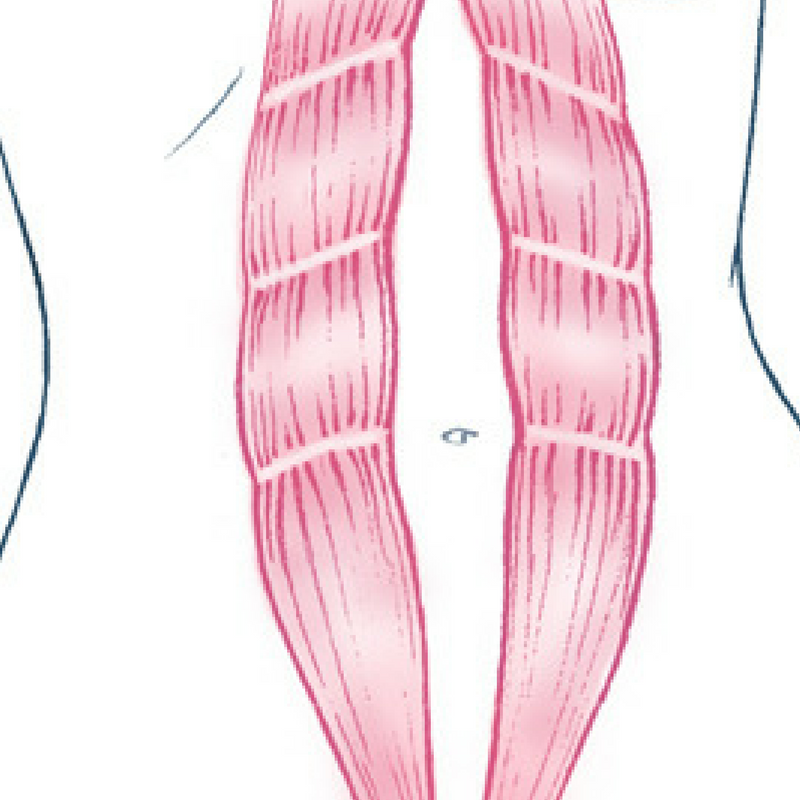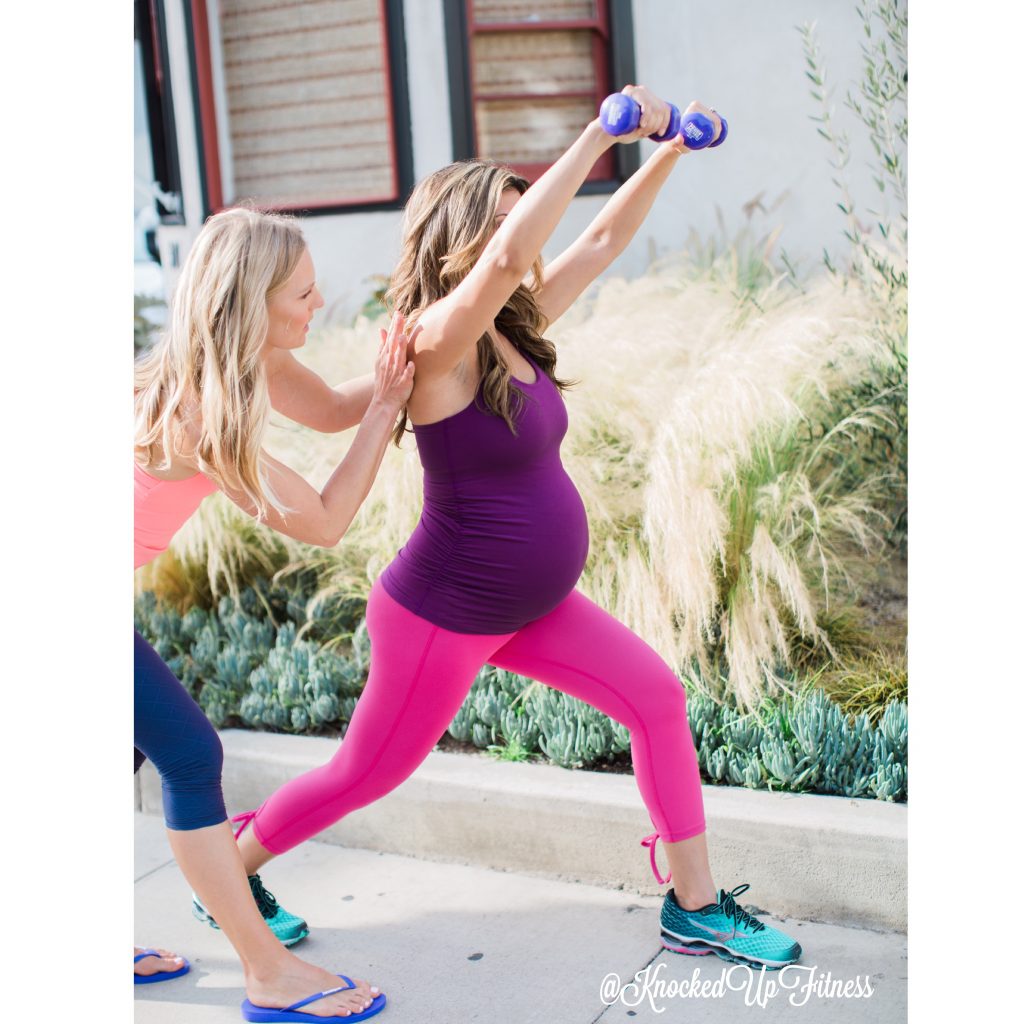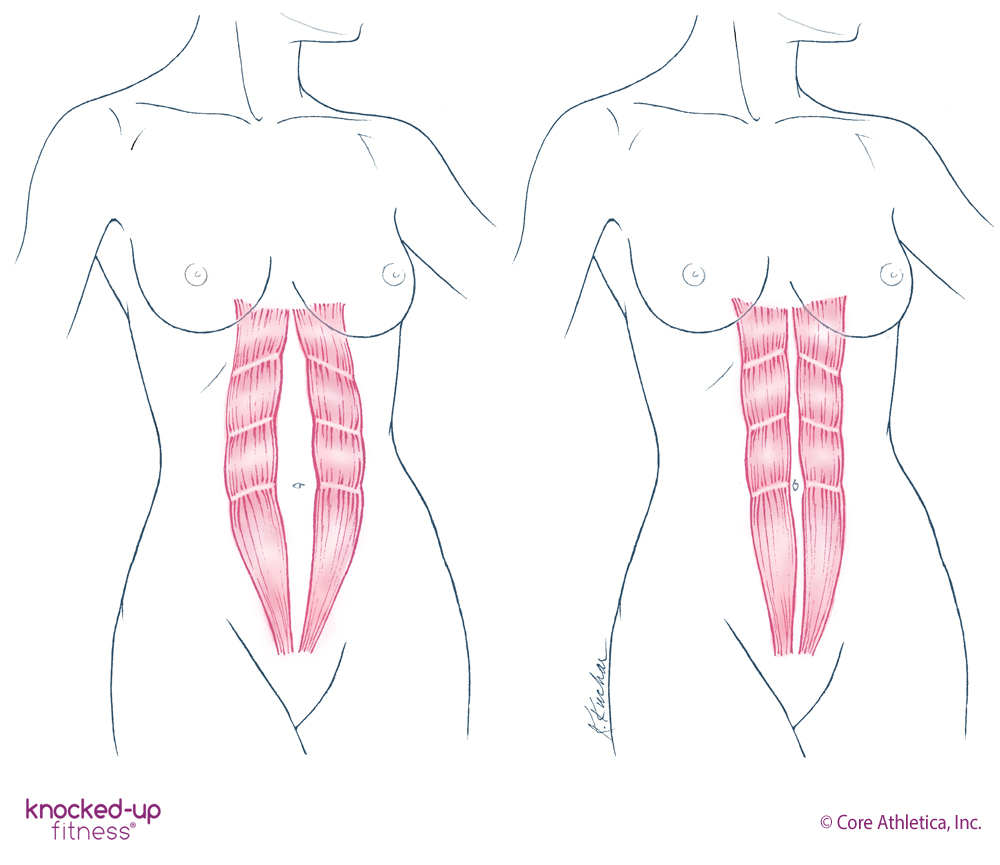Knowing All About Rectus Diastasis
Although not a familiar or much discussed medical term, the condition of Diastasis Recti is one that affects an overwhelming number of new and expectant mothers among others. And as always, awareness is the key to treating and understanding this common malady. Knowledge is power, and with the aid of a few basic steps you can command and control rectus diastasis. Once you and your doctor diagnose this condition, then you will hold the power to conquer and correct it.
Rectus diastasis is a condition that can happen to anyone male or female, although it tends to affect pregnant women the most. They often display a small pooch near the stomach area. The condition is characterized by an abdominal weakness followed by a division of muscles in the mid-abdomen region. This condition is known by many names, the most popular being Diastasis Rectus Abdominis (DRA); a name most commonly assigned by physiotherapists.
In biological terms, Diastasis recti (DR) occurs when the tissues that form a connection between each side of rectus abdominis undergo a thinning process. In medical terms, this tissue is known by the name Linea Alba; a tissue that runs to the center of the rectus abdominis.
The thinning process is not always a cause for concern, as the linea alba naturally widens to create space for your baby while at the same time allowing your organs to function normally. Also encouraging is the fact that this condition is not associated with mortality or morbidity.
Here are the facts about Diastasis recti:
- Post-childbirth, diastasis takes ample time to heal because of the breastfeeding process.
- For optimal bodily functioning, the closing of the created abdominal gap is not required. However, the connective tissue requires support to promote the correct functioning of the ab muscles.
- One way to heal diastasis is by enhancing the supply of nutrition to the body. The animal protein-rich in collagen is recommended to facilitate the healing process.
- One can treat diastasis by avoiding certain types of exercises, like knee tucks, crunches, planks and sit-ups.
Diastasis Recti Symptoms
A weakened corset muscle can serve as the root cause of any number of common physiological issues. To prevent this condition, learn more about the common symptoms and telltale signs of Diastasis recti:
- Protruding stomach
Diastasis recti often reveals itself in the form of a protruding postpartum stomach or–to put it more simply–the bulging of the belly, despite regular exercise. With this condition, the abdominal wall weakens without the lean connective tissues providing needed support. The abdominal organs find no support by way of connective tissue, thus resulting in a noticeable protrusion.
Lower back pain is a common condition, and one generally identified as a symptom of diastasis. When a person sits with a hunched back, the individual’s pelvis and abdominal wall weaken; thus resulting in sacroiliac (a physical instability). If you encounter these symptoms, then chances are that you may have diastasis.
- Weak pelvic floors causing issues
Have you been facing incontinence issues? They may be a sign of pelvic floor issues. A weakened internal core, coupled with poor pelvic alignment, leads to this common health challenge. And as it turns out, Diastasis recti is highly associated with this weakened core and pelvic organ prolapse.
Although common, these symptoms may very well be associated with DR. And as always, knowledge is power. Once you know what is causing this condition, then you are well on the road to curing it.
Diastasis Recti Test
A quick and simple at-home test can determine whether you are dealing from Diastasis Recti, as well as the progress and extent of this condition. If you are unable to perform any of these easy and low impact tests, then, by all means, consult a physician.
The overall goal of this test is to identify the muscle gap and strength of the connective tissue at the core and judge its overall likelihood to cause weakness in the stomach.
To complete the test, follow these steps.
Step 1: Lie down on your back and bend your knees.
Step 2: Relax your abdominal muscles and tilt your head. Flex the ab muscles. Feel for the ridges that are connecting the muscles with the use of two to four fingers.
When testing for DR, please observe certain guidelines. Never lift your shoulders, only raise your neck and head. Feel the area above and below the belly button.
Yet before starting the test, you may wish to gain more of an insight into the correct process of DR testing.
Diastasis Recti in Men- Symptoms, Causes and Treatment
Contrary to popular belief, diastasis recti is not just prevalent in women. And while never fatal, it can definitely cause discomfort within the male body. This condition may cause lower back pain, incontinence, and constipation for prolonged periods, as well as breathing problems or discomfort when moving. And if left untended, it might also produce a hernia. So if you are experiencing these symptoms, consult your doctor about the keen possibility of DR in men.
So what exactly causes DR in males?
- Incorrectly performed exercises, like overly vigorous sit-ups, and excessive weight lifting.
- Men with a family medical history of DR are at a higher risk, so if your parents have suffered from this condition, then you may as well.
- Gaining extra pounds puts excess pressure on the abdomen region. This is a probable cause of separation. Another cause might be poor posture; indeed, if a man slouches while walking or standing, exerting pressure on the front instead of the sides, then diastasis recti can result.
Ultimately, the secret to a diastasis recti-free life can be accessed through a lean and fit lifestyle that is a state attained through good exercise habits.
To treat the disease, try three key techniques: exercises, surgery and bracing. Bracing is a popular procedure that relieves excruciating pain by supporting the lower back region and abdominal area. If pain persists or intensifies, then you may have to undergo a surgery popularly known as ‘Abdominoplasty’.
How to Deal with Diastasis Recti during Pregnancy
DRA is generally witnessed in women after childbirth. However, some women also experience this problem during pregnancy. So how can it be detected during pregnancy?
Before checking, just keep it in mind that pregnancy is not the sole cause of separation. Abdominal pressure is the root cause, and it goes without saying that pregnancy does create much of this pressure. In addition, there are cases where women have actually reversed the separation at the time of pregnancy; doing this primarily by way of exercise. You hold the power to conquer this condition! To achieve this effect, follow these steps:
- The focus should be on preventing the abdominal muscle isolation that occurs when pregnant ladies do exercises like sit-ups and crunches
- Instead, try squats to strengthen the inner body
- Avoid any exercise that involves rib thrusting
- Maintain the right posture while rising from or lying down on the exercise mat.
Diastasis Recti Exercises Recommended For Everyone
Exercises have always been the best home remedy for certain ailments, and this definitely holds true for diastasis recti. Since this phenomenon is mostly witnessed in pregnant women, let us share some exercises that might actually help you strengthen your core.
Belly Breathing
Belly breathing is one of the best rehab exercises recommended by the vast majority of fitness experts. To start, lie down on your back and commence with deep inhaling. Now exhale as if you are wearing a corset, which means your abdominal wall will sustain and gain strength.
Quadrupled Abdominal
This particular exercise starts with a person getting down on all fours, keeping in mind to maintain a flat back. By maintaining this posture, one has to inhale slowly with their abdominal wall expanding towards the floor. Then gradually exhale, keeping in mind to draw the muscles upward. Throughout the exercise, one has to keep one’s back flat as much as possible.
Abdominal Drawing In
While doing your daily chores, always try to pull in your stomach. It is not difficult to breathe during these short instances, but the regular contraction of the abdominal muscle is in itself an exercise.
Heal slides to go with alternating arms
The exercise starts with you lying on your back, your feet resting on the floor and your knees all bent. Now, as you exhale, lift your right foot before you while extending the opposite arm just above your head. Then inhale and come back to the initial position. Repeat the same movement with your left foot.
Faithfully performing these four exercises on a daily basis can bring you fruitful results, the outcome being a quick recovery from diastasis recti. However, some workouts jack-knife a body and pressurize the abdominals. These extreme exercise routines are extremely harmful to a human body, and one should avoid doing them. Workouts such as oblique, crunches, pilates and sit-ups are not recommended for those suffering from DR.
Healing Diastasis Recti with Healthy Habits
The healing of Diastasis recti demands restorative work on the pelvic floor, core, and separation as a whole. Indeed, recent research has revealed that women suffering from DR are prone to pelvic floor dysfunction and urinary incontinence. Moreover, some suffer from pelvic organ prolapse and fecal incontinence.
It is also important to consider those common everyday habits that also can stand worsen the DR. Did you know that the shape of our bodies is merely the outcome of our habits? Yes, it is true and to prevent you from suffering, we will list down certain habits that may need a little change.
Sitting style while reading books
Everybody likes to be cozy in their favorite place while they indulge in their favorite reads. However, if needed amend your sitting posture by keeping your pelvis elevated just above the heels and untucking your tailbone. By doing this regularly every time you read, you can better work toward healing your DR condition.
Standing style when washing
The correct stance to maintain while washing your face in the basin is to get your hamstrings in control. Always pull your body tall and taut and prevent your ribs from thrusting and leaning on the counter.
Posture while brushing teeth in the morning
A common mistake that we all make is leaning on the basin while brushing teeth in the morning. To do so means we are unable to hold our own body weight for a mere two minutes. The correct thing to do here is to stand straight every time you brush your teeth.
Sitting at your desk while working in an office
While working in your office, the right thing is to sit on the edge of your desk chair to untuck the tailbone.
Holding your child
A common tendency among mothers is to hold their children on their hips. However, try to avoid leaning forward while holding your child in this manner.
Bending to pick up things from the ground
When picking up something from the ground beneath you, it is best to sit down in a squat position. This lessens the excess pressure that your spine has to undergo when you lean forward at a sharp angle.
Rising from a chair
When getting up from your chair, always make sure that your knees are just above your toes. Instead, use a squat position.
When reaching for an overhanging cabinet
While reaching for a cabinet overhead, try to keep your ribs positioned downward.
Weak posture is often just a part and parcel of normal everyday activities. You can change these habitual behaviors for the betterment of your health
Summary
Rectus diastasis is quite common among men and women. However, the condition is more prevalent in pregnant women or ladies who have gone through childbirth. Thankfully with medical advancements, doctors have identified healthy habits and good exercises that can help you repair DR. Follow the right habits and your doctor’s suggestions to beat rectus diastasis!











3 Comments
Your post is so much more informative than other’s I’ve found on diastasis recti. Thanks so much!